September itinerary in Japan Day 5 (Iwate Day 3)
(Thursday, September 30)
Table of contents
3. Bank of Iwate Red Brick Building
4. Morioka Takuboku / Kenji Seishunkan (former 90th Bank Main Store Main Building)
On this day, I took a walk in Morioka city and went to Koiwai Farm as planned. In the morning, I went around the sightseeing spots on the Morioka city center circulation bus “Dendemushi” according to the itinerary.
https://edokagura.com/en/local-cuisine/473/
“Dendenmushi” is a circulation type that takes 35 minutes to go around, and there are clockwise (red) and counterclockwise (green). It runs every 10-15 minutes. The clockwise operating time from Morioka Station is 9: 00-16: 45. The counterclockwise operation will be 5 minutes after the clockwise operation (9: 05-16: 50). The one-day free ticket is Yen350 for adults and Yen180 for children.
This time, I went around the counterclockwise route as planned.
1. Morioka Castle Ruins Park
(“Dendenmushi” counterclockwise, departing at 9:05 in front of Morioka Station, arriving at Morioka Castle Site Park at 9:11)
Morioka Castle has been selected as one of Japan’s Top 100 Castles by the Japan Castle Association, but there is no castle tower and only Ishigaki (Stone wall).
It has been selected as one of the 100 best city parks in Japan.
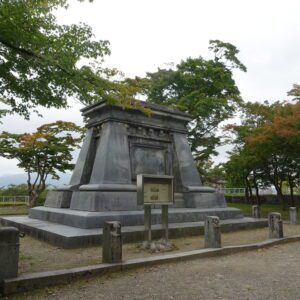
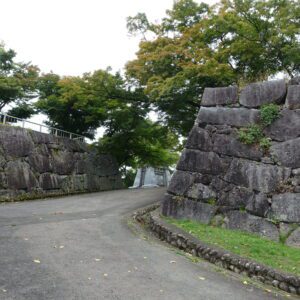
2. Sakurayama Shrine
(In Morioka Castle Ruins Park)
It was founded in 1749. There is Eboshi Rock.

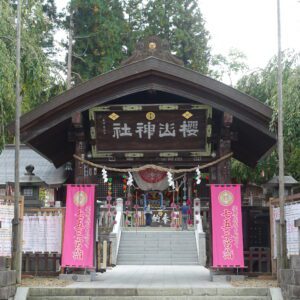
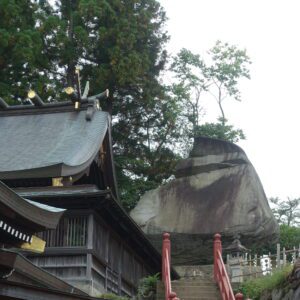
3. Bank of Iwate Red Brick Building
(4 minutes walk from Sakurayama Shrine)
It was built in 1911 as the former Morioka Bank, designed by Tatsuno Kingo and Kasai Manji Architects. It is a national important cultural property. Kingo Tatsuno is an architect famous for designing the Marunouchi station building at Tokyo Station and the Bank of Japan Head Office. The Bank of Iwate Red Brick Building has a wonderful exterior, but the interior is also wonderful, so please take a look inside.
Admission: Adults (16 years old and over) Yen 300, elementary and junior high school students Yen100
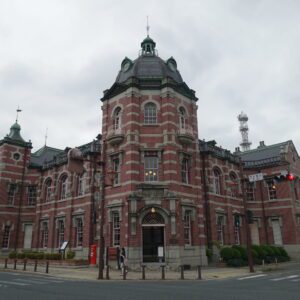

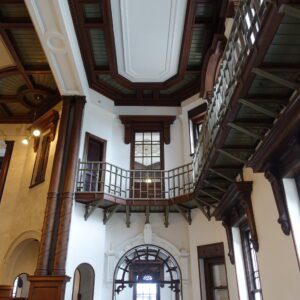
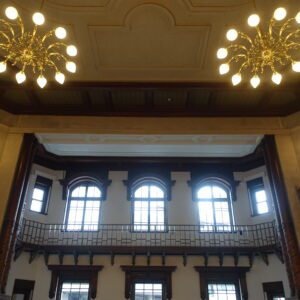
https://www.iwagin-akarengakan.jp/
4. Morioka Takuboku / Kenji Seishunkan (former 90th Bank Main Store Main Building)
(1 minute walk from Bank of Iwate Red Brick Building)
It was built in 1910 by Tsutomu Yokohama, an architect from Morioka City. It is a national important cultural property. In particular, I didn’t think it was necessary to tour the inside.
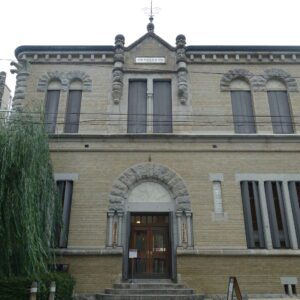
5. Konyacho Banya, Kami no hashi (Ue no bridge), Iwate Prefectural Public Hall, Ishiwarizakura (The rock splitting cherry tree)
(Konyacho Banya is about a 5-minute walk from Morioka Takuboku / Kenji Seishunkan)
In the preliminary plan, Konyacho Banya and Iwate Prefectural Public Hall were a little far apart and I thought it would be difficult to visit, but I had plenty of time to visit.
Konyacho Banya was built as a branch of the Morioka fire brigade in 1913 and was used as a banya. It is said to be typical of wooden Western-style office architecture during the Taisho era. However, it was not possible to observe during the renovation work.
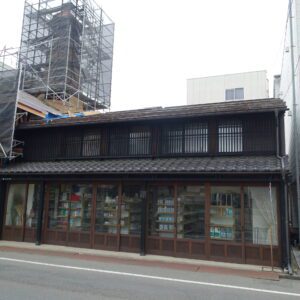
The Kami no hashi is a bridge over the Nakatsugawa River in 1609. It is designated as a national important art object. Ue no hashi was within a 5-minute walk from Konyacho Banya.
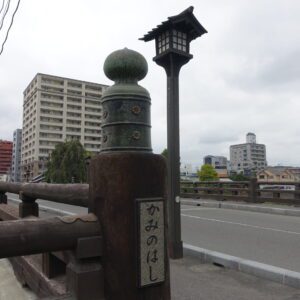

The Iwate Prefectural Public Hall was built in 1927 to commemorate the marriage of Emperor Showa. It’s a very solid and magnificent building, but I felt it was quite old.
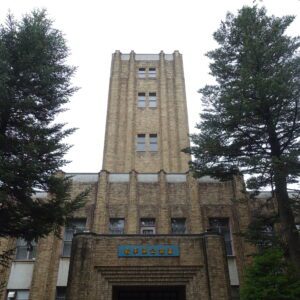
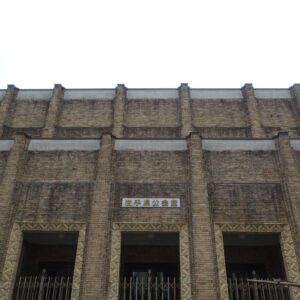
Ishiwarizakura was about a 3-minute walk from the Iwate Prefectural Public Hall. A huge granite with a circumference of 21 meters is splendidly broken and cherry blossoms are growing. Of course, the cherry blossoms are not in bloom in September. It is designated as a national natural monument.
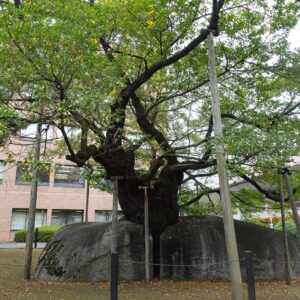

6. Morioka Hachimangu
(From the prefectural office near the Iwate Prefectural Public Hall, take the “Dendemushi” counterclockwise for 3 minutes, get off at Morioka Bus Center, and walk for 10 minutes.)
Known for the Nambu Yabusame ritual. It was a very nice shrine.
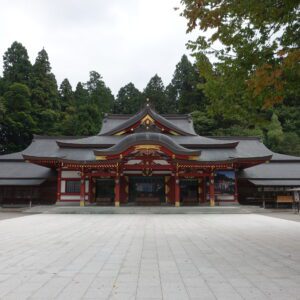
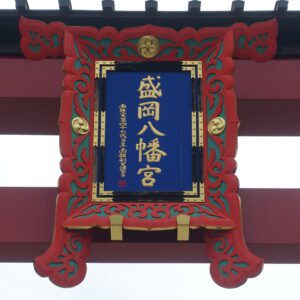
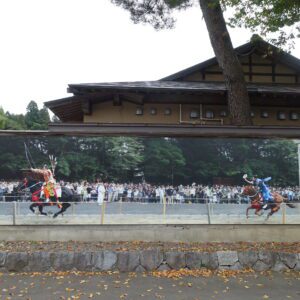
7. Takuboku Newlyweds House
(10 minutes walk from Morioka Hachimangu to Morioka Bus Center, 12 minutes on the counterclockwise ride of “Dendemushi”, get off at Takuboku Newlyweds House Exit, 1 minute on foot)
This is the only surviving samurai residence in Morioka, where the newly-married Takuboku Ishikawa lived for about three weeks. There are various materials of Takuboku Ishikawa. I found out that Takuboku Ishikawa lived in a very small room.
Admission: Free
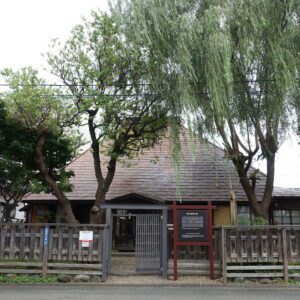
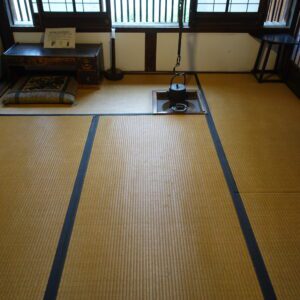
8. Morioka Station
(Take “Dendenmushi” from Takuboku Newlyweds House Exit: Get off at Morioka Station: 10 minutes ride time, or 13 minutes walk from Takuboku Newlyweds House)
9. Koiwai Farm
After lunch, in the afternoon, I took a bus departing from Morioka Station at 13:45 to “Koiwai Farm” on the itinerary. In conclusion, the departure time was too late to fully enjoy Koiwai Farm. Koiwai Farm was a place to go with a little more time. However, I like old farms, so I enjoyed it.
https://edokagura.com/en/local-cuisine/481/

(Getting off at Koiwai Farm Makibaen)
Admission: Yen 800 yen for adults, Yen 300 for children
Business hours: Weekdays 9: 00-16: 00, Saturdays, Sundays, and holidays 9: 00-17: 00
Koiwai Farm was established in 1891 (Meiji 24).
https://www.koiwai.co.jp/makiba/en/
Many of the buildings built on the premises of the Uemaru cowshed are designated as national important cultural properties. I didn’t have time, so I immediately headed to the Uemaru barn. I was surprised to see an animal that looked like a raccoon dog crossing in front of me on the way.
I was able to see many cows such as cute calves up close.
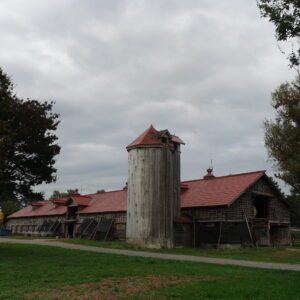
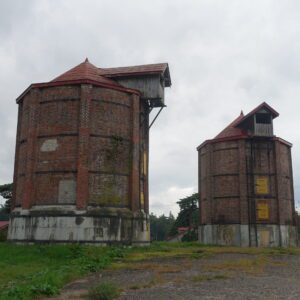
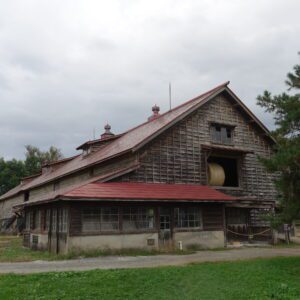
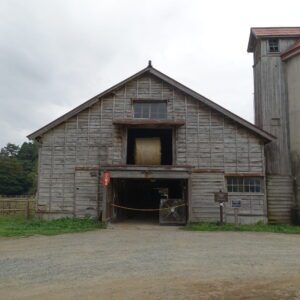
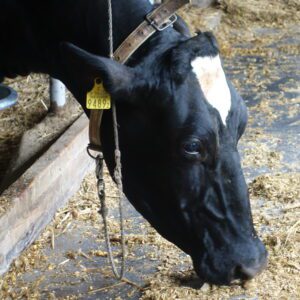
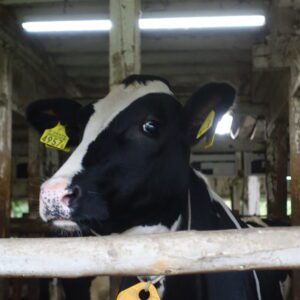
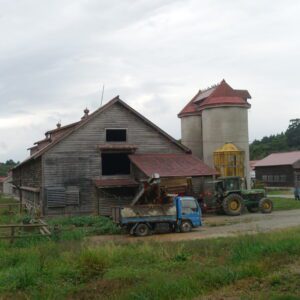
I will post the meal edition tomorrow.
Note: The departure / arrival times, fees, admission fees, etc. of transportation listed in the text are as of the time of writing the BLOG. They may change in the future, so please check for yourself when you go on a trip.